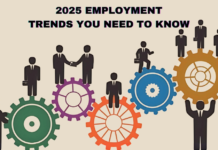In management consulting circles and corporate boardrooms, there is considerable discourse surrounding the impact of generative AI, exemplified by models such as ChatGPT, Bard, DALL-E, or Midjourney, on employment dynamics. Macroeconomists are equally engaged in this dialogue. Traditionally, it was assumed that technological advancements primarily affected low-skilled occupations, leaving creative roles reliant on human ingenuity untouched. However, the emergence of generative AI models has reshaped this narrative, demonstrating their efficacy across various domains, from music and video production to image creation, information synthesis, and medical diagnostics.
Optimists advance two key arguments. Firstly, they assert that while generative AI excels in creative tasks, human guidance, instruction, and “prompting” remain essential for maximizing its potential. Consequently, numerous employment opportunities in fine-tuning AI models and algorithms are anticipated. Secondly, these optimists argue that despite the remarkable capabilities of generative AI, it is unlikely to completely supplant human involvement. Content generated by AI will necessitate human oversight, editing, and refinement.

Indian proponents offer an additional perspective, suggesting that India could emerge as a vital backend hub for generative AI-based work, leveraging its demographic dividend and abundant pool of young, technically skilled individuals. However, historical data offers a sobering reality check on these assertions. Technological innovations have consistently resulted in a net reduction in jobs rather than creation. There is scant evidence to suggest that generative AI will diverge from this pattern. Moreover, while productivity gains are anticipated, India’s employment elasticity to GDP growth has been declining, indicating a failure to generate jobs at a pace commensurate with economic expansion.
Challenges persist regarding the readiness of India’s workforce for high
ly skilled occupations. The existing gap between available skills and market demands underscores deficiencies in the nation’s education and skill development systems. Many graduates require substantial post-recruitment training to perform effectively in their roles. Additionally, India grapples with a low labour force participation rate, indicative of underutilized human capital.
In conclusion, while generative AI presents exciting possibilities for innovation and job creation, it also poses significant challenges, particularly in the context of India’s workforce dynamics. The need for human oversight and the complexities of skill developme
nt underscore the importance of thoughtful policy measures to harness the potential of generative AI while addressing employment and education gaps. India’s journey towards becoming a hub for generative AI work will require collaborative efforts between government, industry, and educational institutions to ensure that the workforce is equipped to thrive in an AI-driven future. By investing in education, skill development, and fostering a culture of innovation, India can position itself as a global leader in generative AI while maximising the benefits for its citizens and economy.






